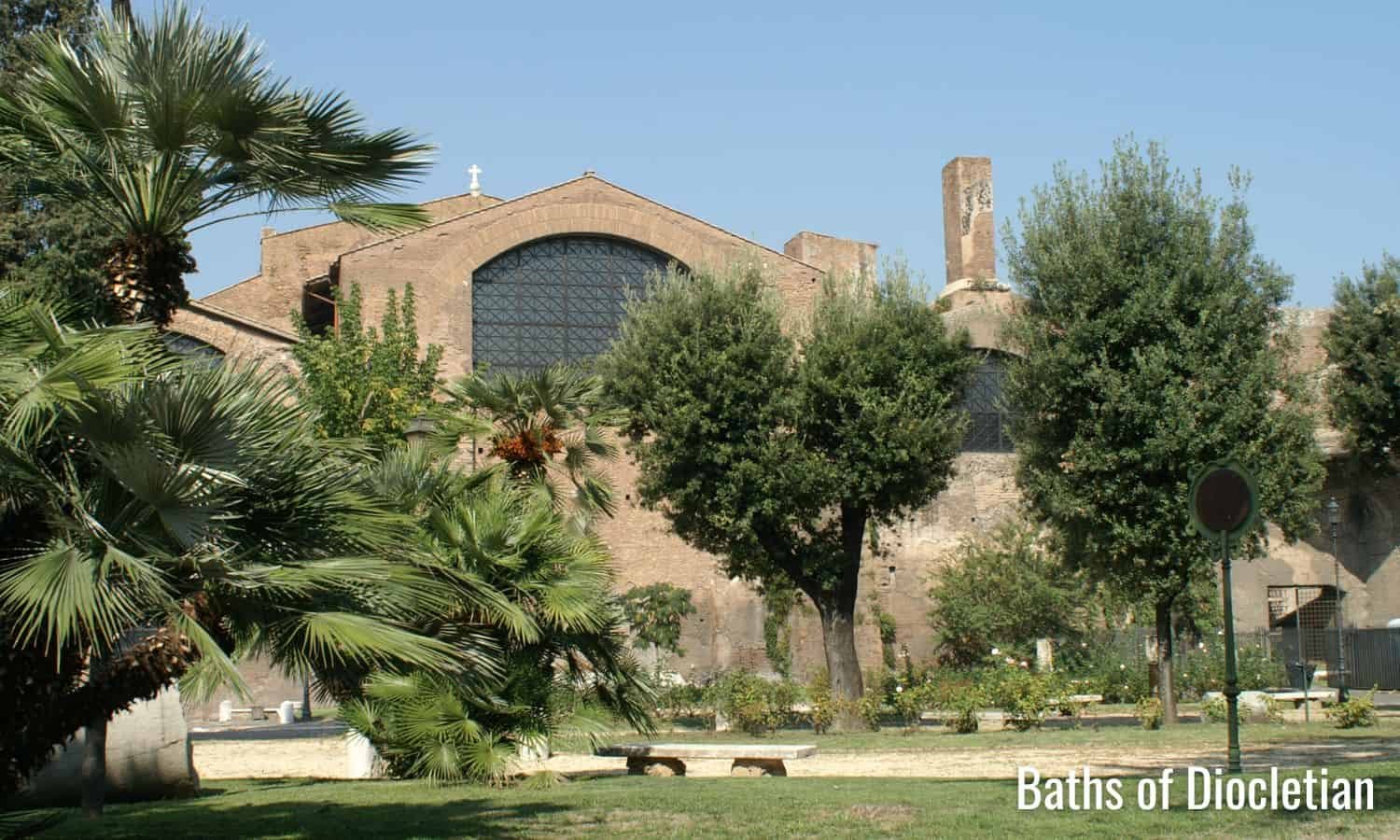The Terme di Diocleziano, constructed between 298 and 306 AD by Emperor Diocletian, was the largest thermal baths complex in Rome and the entire Roman Empire. It is also known as the ‘Baths of Diocletian’. Designed to host over 3,000 people, it included a gymnasium, library, and public baths with cold, hot, and warm water sections. Dedicated to Roman citizens by Diocletian and Maximian, who stepped down in 305 AD, the site remains a remarkable example of ancient Roman engineering and design despite enduring various attacks and demolitions over the centuries.
How to Get There
The Terme di Diocleziano is conveniently reachable by public transport. The closest metro station is Repubblica, on lines A and B. Buses C2, H, 36, 38, 40, 64, 86, 90, 92, 105, 170, 175, 217, 310, 360, 714, and 910 also serve the area. It’s also a short walk from the Rome Termini Railway Station.
List of Attractions
- Octagonal Room: Situated at the west side corner, this room is part of the Roman National Museum and showcases an impressive octagonal design.
- Calidarium: The main hot bath area, partially preserved and now part of the museum.
- Tepidarium: A basilican room intended for warm baths.
- Rectangular Pool: A large pool area from the original baths complex.
- Gymnasiums and Dressing Rooms: Symmetrically arranged rooms for physical exercise and changing.
- Service Rooms: Various rooms that supported the baths’ operations.
- Michelangelo’s Cloister: An outdoor cloister designed by Michelangelo, featuring sculptures, sarcophagi, and statue bases.
- Epigraphic Museum: An indoor section displaying numerous inscriptions and sculptures of emperors.
Ticket Information
Entry to the Museo Nazionale Romano, Terme di Diocleziano costs €10, which also includes access to the other three buildings of the National Museum of Rome: Palazzo Massimo, Palazzo Altemps, and Crypta Balbi. Audio guides are available for €5.
Tips for Visiting
- Plan Your Visit: The museum is open from Tuesday to Sunday, 9:00 AM to 7:45 PM. It’s best to visit during these hours to avoid crowds.
- Explore the Surroundings: Nearby historical landmarks include Santa Maria degli Angeli e dei Martiri and Piazza della Repubblica.
- Audio Guide: The audio guide offers detailed insights into the history and significance of each room, enhancing your visit.
- Photography: Photography is allowed for personal use, but tripods and flash photography are not permitted.
- Accessibility: The site provides various accessibility services, including wheelchair access and guided tours for visitors with disabilities.
- Combine with Other Museums: Since the ticket includes access to multiple museums, consider visiting other nearby attractions to maximize your time in Rome.









